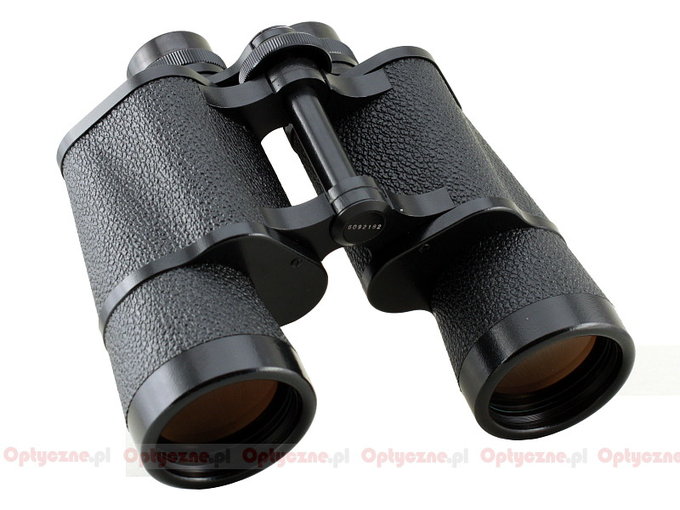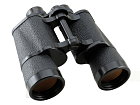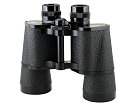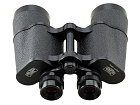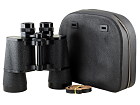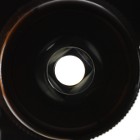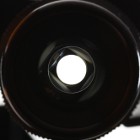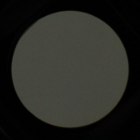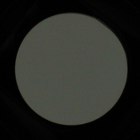Carl Zeiss Jena Jenoptem 7x50
The model we are testing here was produced in 1985 and, despite those 30 years that passed, it is very well-preserved. Of course it features the T3M coatings.
Apart from the binoculars buyers got in the box a leather strap and a soft, leather pouch with its own strap. There are no caps for objective lenses or oculars included.
| Magnification | Lens diameter | Angular field of view | Prisms | Eye relief | Weight | Price |
|---|---|---|---|---|---|---|
| 7 | 50 | 128/1000(7.3o) | Bak-4/Porro | 12 mm | 1010 g | 800 PLN |
Summary
Pros:- classic and solid casing,
- slight coma,
- moderate astigmatism,
- good control of the chromatic aberration,
- not especially bothersome brightness loss at the egde of FOV,
- good darkening inside the binoculars,
- very wide range of IPD,
- good quality BaK-4 prisms,
- almost circular exit pupils.
Cons:
- distinctly yellow cast of the image,
- huge distortion,
- too many flares near the prisms,
- not very comfortable eye relief,
- image on the edge of the field could have been sharper.
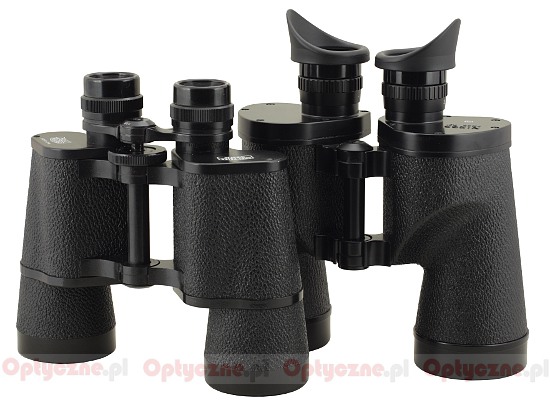 Carl Zeiss Jenoptem 7x50 and Nikon 7x50 IF HP WP Tropical |
Some time ago we tested the Carl Zeiss Jena Binoctem 7x50 binoculars – an older but equally well-preserved model from 1968 so an era when they still used single layer coatings. That device got a very decent result of over 107 points in our test but, in order to assess thoroughly the Jena factory production we decided to check a newer model, the Carl Zeiss Jena Jenoptem 7x50, already featuring the multilayer coatings.
As we already mentioned the coatings, let’s see how they influence the transmission.
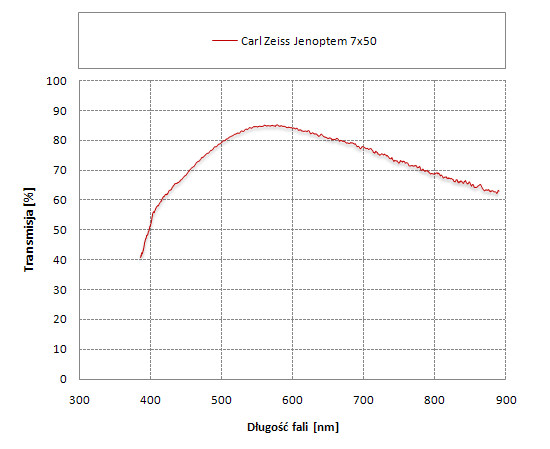 |
The graph above shows the main difference between the newer Jenoptem and the older Binoctem: in the case of the older model the transmission never exceeded 80%, in the newer one it reaches almost 85%. There is a huge difference when it comes to purple light results – the transmission gets to 55% there while the old Binoctem had it on a level of just 40%. Still you have to mention the fact that the colour rendition remains bad; the Jena multi-coatings were optimized only for the centre of the visible spectrum so, as a result, the difference between the transmission of yellow and blue light amounts to over 20%.
The next difference which sticks out is the appearance of the exit pupils. Over the years the Jena factories changed the way they fixed prisms inside the tubes – from more to less vignetting-prone. It can be noticed: the pupils of the new model are almost perfectly round, the old one had them noticeably truncated.
As the optics (apart from the coatings) didn’t change much, the performance of both models is quite similar: they correct most of optical aberrations in the same way. They should be also praised for the good correction of the chromatic aberration, the coma and astigmatism.
Taking into account the coating and prism fixing innovations, the better result of the Jenoptem 7x50 doesn’t surprise us. What’s more, it is also a very sensible result. Still you should remember that the Jenoptem 7x50 in mint condition can cost as much as about 250 Euro. For such an amount of money you can buy two pairs of the Delta Optical Titanium 7x50, a device with a wider field of view and a better result in our test. The same 250 Euro is enough to buy you the Vixen Forest 7x50, a pair of binoculars we haven’t tested yet but one which enjoys a very favourable opinion of the users.
However it’s always worth to browse second-hand shops and Internet auction sites. If you manage to find a Jenoptem 7x50 in perfect condition for less than 200 Euro it is certainly a good bargain; you can be sure the binoculars will serve you satisfactorily for many years.




